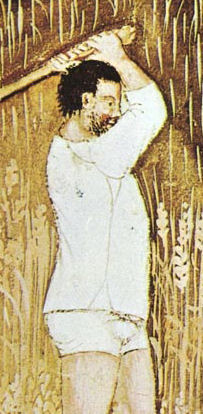Gusset
Gusset is a term used in various fields, including engineering, fashion, and architecture, to describe a piece of material designed to reinforce or enlarge a part of an object. This article will focus on the significance of gussets in these areas, highlighting their applications and importance.
Definition and Purpose[edit | edit source]
A gusset is typically an inserted piece of fabric, metal, or other material that is used to strengthen or enlarge a part of an item. In fashion and textile design, gussets add breadth or reduce stress from tight-fitting areas of clothing, such as underarms or the crotch of pants. In engineering and architecture, gussets made of metal or wood can reinforce structures, particularly in truss construction, where they connect intersecting members.
Applications in Fashion[edit | edit source]
In the realm of fashion design, gussets are essential for both aesthetic and functional purposes. They are often used in the design of garments to provide additional room or flexibility, improving the wearer's comfort and mobility. For example, a diamond-shaped gusset inserted into the underarm of a shirt allows for a greater range of motion, while a triangular gusset in the crotch area of pants reduces tension, preventing seams from ripping.
Applications in Engineering and Architecture[edit | edit source]
Gussets serve a critical role in engineering and architecture, particularly in the construction of bridges and buildings. They are used to strengthen the joints of structures, ensuring stability and durability. In truss bridges, for example, gusset plates made of steel are often used to connect the individual elements of the truss, distributing load and stress evenly across the structure. This application is crucial for the safety and longevity of the construction.
Materials and Construction[edit | edit source]
The materials used for gussets vary depending on their application. In clothing, gussets are usually made from the same fabric as the garment to ensure a uniform look and feel. However, materials that offer stretch, such as spandex, may be used for added flexibility. In construction, gussets are typically made from metal, wood, or composite materials, chosen for their strength and durability.
Historical and Modern Use[edit | edit source]
The use of gussets dates back centuries, with early applications in both clothing and construction. In medieval times, gussets were inserted into garments to allow for greater movement, especially in armor. In modern times, the principles behind gussets remain the same, though the materials and techniques have evolved. Today, gussets are found in a wide range of applications, from high-fashion designs to the construction of skyscrapers and bridges, demonstrating their versatility and enduring importance.
Conclusion[edit | edit source]
Gussets are a fundamental component in various fields, serving to reinforce, enlarge, or add flexibility to different parts of objects. Whether in the design of a garment or the construction of a building, gussets play a crucial role in enhancing the functionality and durability of the item. Their widespread use across different industries underscores their significance and the ingenuity behind their application.
| Gusset Resources | |
|---|---|
|
|
Search WikiMD
Ad.Tired of being Overweight? Try W8MD's physician weight loss program.
Semaglutide (Ozempic / Wegovy and Tirzepatide (Mounjaro / Zepbound) available.
Advertise on WikiMD
|
WikiMD's Wellness Encyclopedia |
| Let Food Be Thy Medicine Medicine Thy Food - Hippocrates |
Translate this page: - East Asian
中文,
日本,
한국어,
South Asian
हिन्दी,
தமிழ்,
తెలుగు,
Urdu,
ಕನ್ನಡ,
Southeast Asian
Indonesian,
Vietnamese,
Thai,
မြန်မာဘာသာ,
বাংলা
European
español,
Deutsch,
français,
Greek,
português do Brasil,
polski,
română,
русский,
Nederlands,
norsk,
svenska,
suomi,
Italian
Middle Eastern & African
عربى,
Turkish,
Persian,
Hebrew,
Afrikaans,
isiZulu,
Kiswahili,
Other
Bulgarian,
Hungarian,
Czech,
Swedish,
മലയാളം,
मराठी,
ਪੰਜਾਬੀ,
ગુજરાતી,
Portuguese,
Ukrainian
Medical Disclaimer: WikiMD is not a substitute for professional medical advice. The information on WikiMD is provided as an information resource only, may be incorrect, outdated or misleading, and is not to be used or relied on for any diagnostic or treatment purposes. Please consult your health care provider before making any healthcare decisions or for guidance about a specific medical condition. WikiMD expressly disclaims responsibility, and shall have no liability, for any damages, loss, injury, or liability whatsoever suffered as a result of your reliance on the information contained in this site. By visiting this site you agree to the foregoing terms and conditions, which may from time to time be changed or supplemented by WikiMD. If you do not agree to the foregoing terms and conditions, you should not enter or use this site. See full disclaimer.
Credits:Most images are courtesy of Wikimedia commons, and templates Wikipedia, licensed under CC BY SA or similar.
Contributors: Prab R. Tumpati, MD

